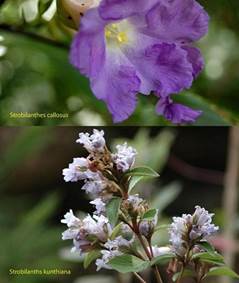Free Courses Sale ends Soon, Get It Now


Free Courses Sale ends Soon, Get It Now



The Karvy (top) and the Neelakurinji (bottom)
Copyright infringement not intended
Context:
Social media in India has been awash since the past three days with photos of a ‘Neelakurinji’ bloom in the Bababudangiri range of the Western Ghats in Karnataka’s Chikkamagaluru district.
Details:
© 2024 iasgyan. All right reserved